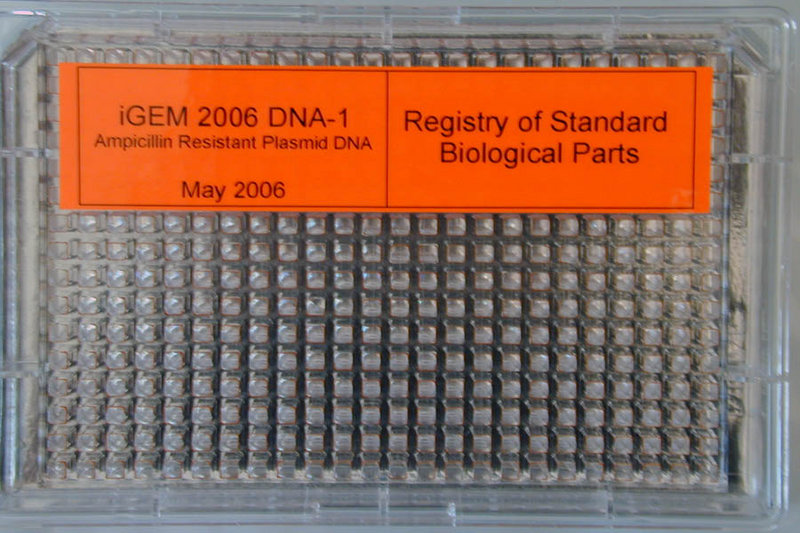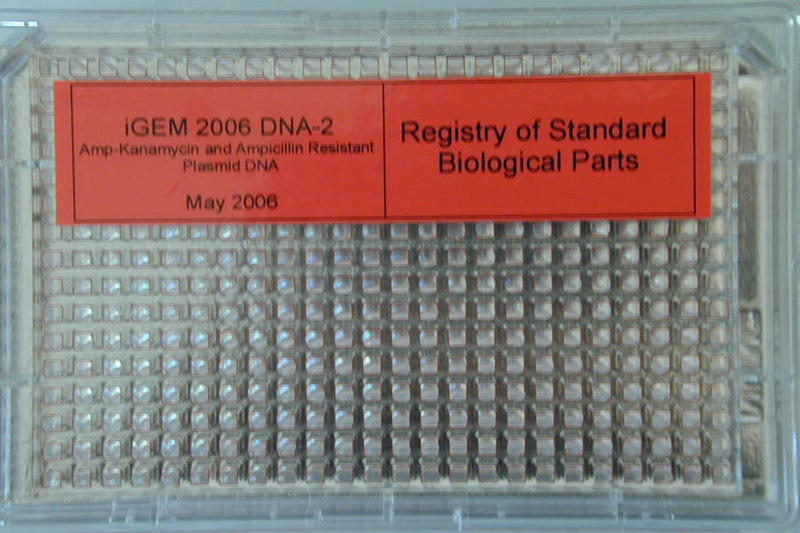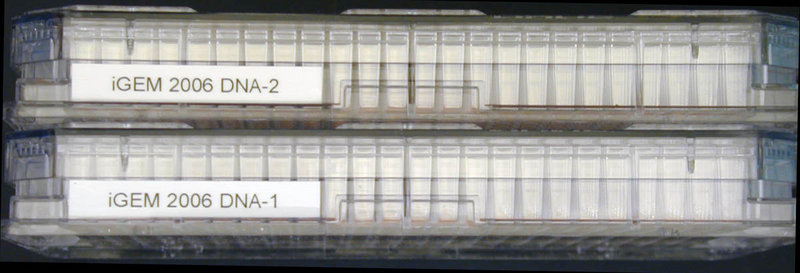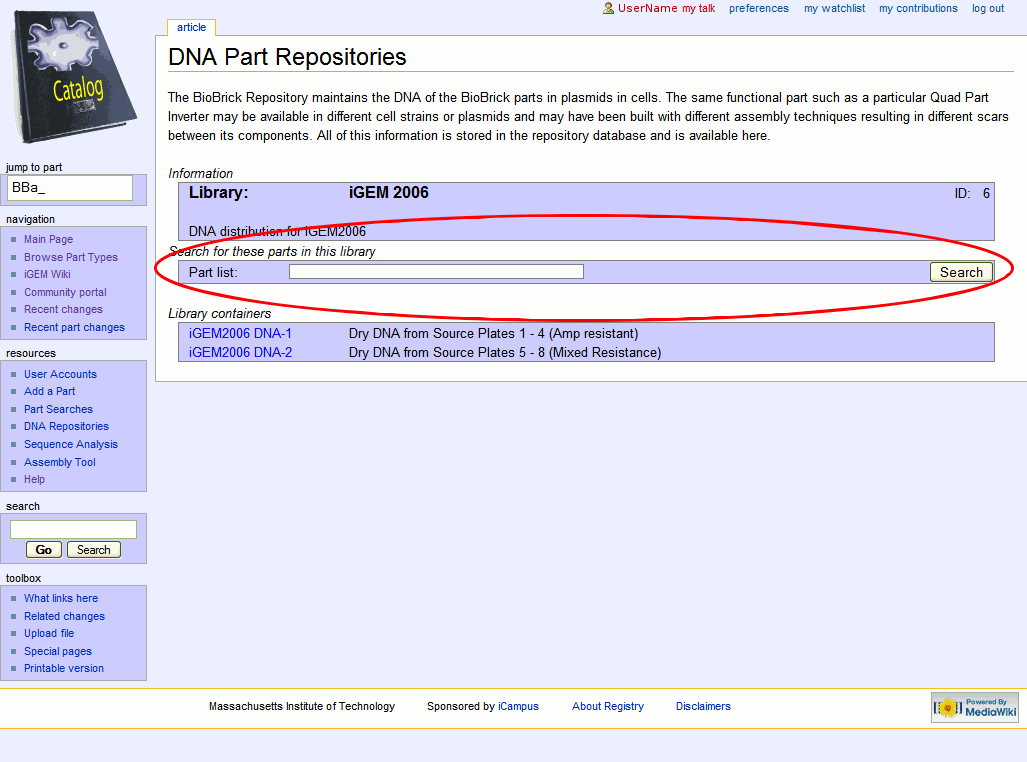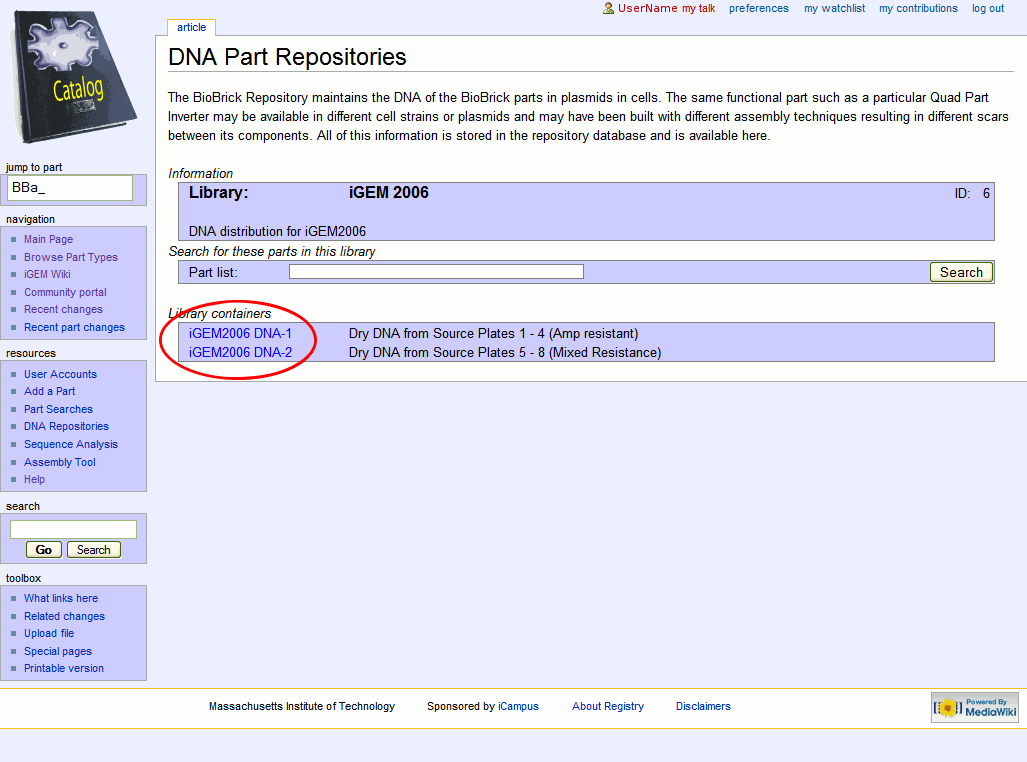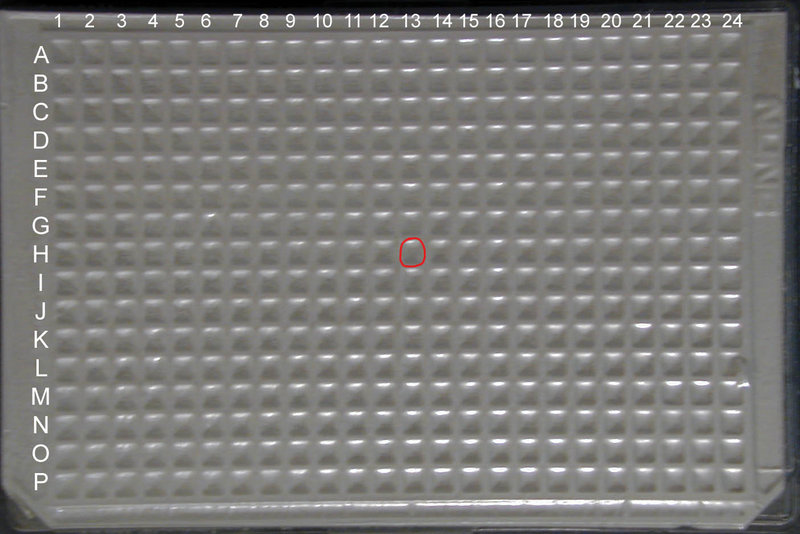Help:IGEM 07 Kit of Parts Delivery
One of the resources that MIT provides teams competing in iGEM is a copy of parts that have been submitted to the Registry. These parts also include those that were submitted as a result of previous iGEM competitions (a big reason why we want you to keep on top of sending us your parts as you create them!). For iGEM 2007, the Registry sent out parts in the form of dried DNA. If you would like to find out more about the iGEM 2006 DNA distribution, click Help:IGEM_06_Biobrick_delivery.
Contents
- 1 The Plates
- 1.1 What do we do with this plate once we have received it?
- 1.2 What do we do when we want to use the DNA?
- 1.3 What is that red (or orange) stuff at the bottom of the wells?
- 1.4 How do we know what the DNA is in each well?
- 1.5 How do we know which well on the plate to puncture and resuspend?
- 1.6 Where are the Plasmid parts?
The Plates
Plates were sent out starting 23 May 2007.You will have received a package containing four plates that look like this:
Contents of iGEM 2007 DNA-1 (slow to load)
Contents of iGEM 2007 DNA-2 (slow to load)
Contents of iGEM 2007 DNA-3 (slow to load)
Contents of iGEM 2007 DNA-4 (slow to load)
What do we do with this plate once we have received it?
As soon as you receive your plate put the plate, still in the freezer bag, into the freezer (-20 degrees or -80 degrees Celsius)!!
What do we do when we want to use the DNA?
The DNA in each well needs to be resuspended. To do this you must:
- Puncture a hole through the foil with a pipette tip (be sure you have the [http://2006.igem.org/Biobrick_delivery#How_do_we_know_which_well_on_the_plate_to_puncture_and_resuspend.3F correct well])
- Add 15 uL of diH2O (deionized water)
- Take 1uL DNA and [http://openwetware.org/wiki/Bacterial_Transformation transform] into your favorite competent cells, plate out on a plate with the correct antibiotic and grow overnight. Your goal here is to obtain single colonies.
- Pick a single colony and inoculate some broth (with the correct antibiotic) and grow ~18 hours.
- Use the resulting culture to miniprep the DNA AND make your own glycerol stock (for further instruction on making a glycerol see [http://openwetware.org/wiki/Endy:Making_a_long_term_stock_of_bacteria this page]).
This DNA is your own collection of exisiting parts that you can use to create your own new parts. By making your own glycerol stocks you now have your own supply to go back to and grow/prep whenever you need that particular part.
What is that red (or orange) stuff at the bottom of the wells?
What you see at the bottom of the wells is your dried DNA (see picture of "bottom-view" above). It is colored with food coloring.
How do we know what the DNA is in each well?
You can see what is in your DNA distribution plates in two ways. By going to this page on the Registry you can either:
- Search for a specific part by entering the part number in the search field (circled in red):
- Or, browse all the biobrick parts in each particular plate by clicking in either one of the two Library containers:
How do we know which well on the plate to puncture and resuspend?
Both of the DNA Distribution plate are Nunc 384-well plates. Unfortunately, the foil cover goes over the column and well markings. Once you have found out which well your biobrick part of choice is in (for example let's say I want BBa_S01987) by searching for it in the Registry (well 13H in plate iGEM 2006 DNA-1) you want to count across the plate starting with Column 1 until you get to Column 13 and down the plate starting with Row A until you get to Row H.
MAKE SURE that the two notched corners of the plate are the BOTTOM two corners (see the top view image at left for correct orientation)
Where are the Plasmid parts?
Plasmid parts are available through the use of the Part:BBa_P1010 Biobrick, whose use is documented in its part page. For more information on plasmids and how to use them, check Help:Plasmids

